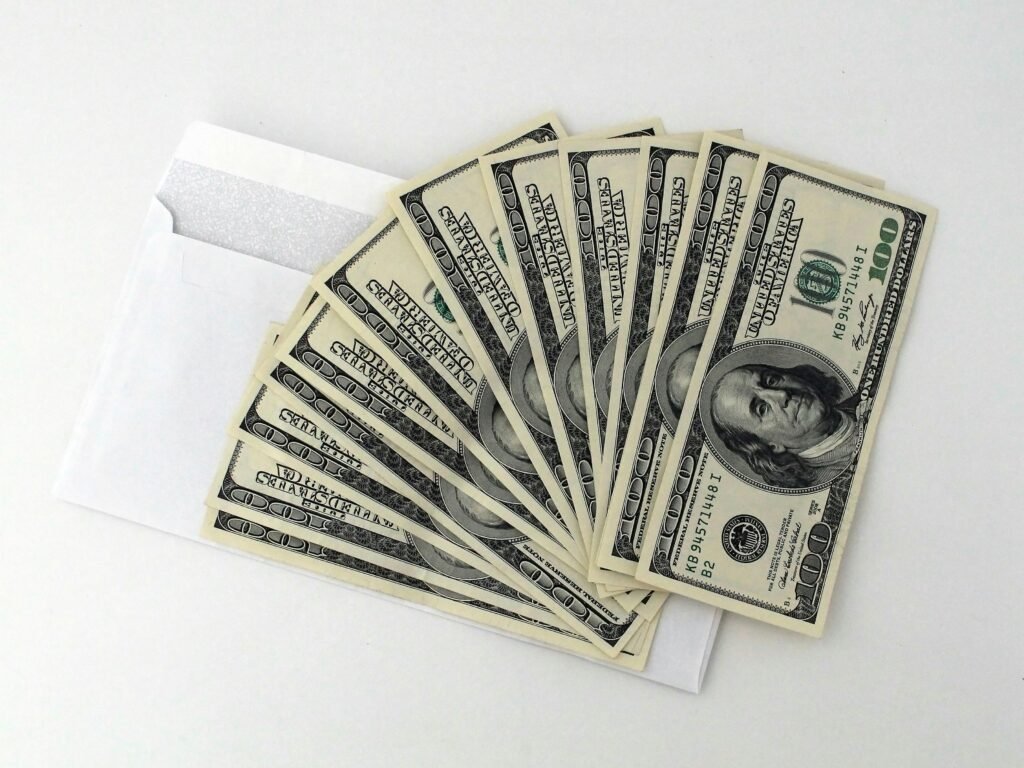Introduction to the Trans-Siberian Railway
The Trans-Siberian Railway stands as a monumental feat of engineering and human endeavor, stretching approximately 9,289 kilometers (5,772 miles) from Moscow to Vladivostok. Recognized as the longest railway in the world, it has captured the imaginations of adventurers, historians, and travelers alike. This vast network of tracks weaves through diverse landscapes, including the rolling hills of the Ural Mountains, the expansive taiga forests, and the picturesque shores of Lake Baikal, which is known as the deepest freshwater lake on the planet. Each segment of the journey offers a glimpse into the rich tapestry of Russian culture and geography.

Historically, the inception of the Trans-Siberian Railway dates back to the late 19th century, initiated under the reign of Tsar Alexander III as a means to connect the far-flung eastern regions of Russia with the western part of the empire. Its construction was driven by both strategic considerations, such as military logistics, and economic imperatives, facilitating the movement of goods and people across vast distances. The railway symbolizes not only a physical link but also a crucial economic artery, contributing to the development of Siberia and enhancing trade routes between Europe and Asia.
For modern travelers, embarking on the Trans-Siberian Railway journey offers a unique opportunity to experience the vastness of Russia in all its splendor. It represents a transformative adventure that goes beyond mere transportation; it invites contemplation, exploration, and interaction with a myriad of cultures and communities along the way. From bustling cities to remote villages, this railway journey enables a profound connection with the soul of Russia, making it a must-do for anyone seeking an extraordinary travel experience.
Choosing Your Route
The Trans-Siberian Railway, one of the most iconic railways in the world, offers travelers various routes to consider for their journey, notably the classic Trans-Siberian route, the Trans-Mongolian route, and the Trans-Manchurian route. Each option provides a distinct experience, reflecting the diverse landscapes and cultures encountered along the way.
The classic Trans-Siberian route, running from Moscow to Vladivostok, spans approximately 9,289 kilometers. This route provides travelers with the opportunity to witness the breathtaking beauty of the Russian countryside, from vast forests to the expansive shores of Lake Baikal, the world’s deepest freshwater lake. Along the way, passengers can explore historic cities such as Yekaterinburg and Irkutsk, immersing themselves in Russian culture and history.
Alternatively, the Trans-Mongolian route, which branches off the Trans-Siberian Railway at Ulan-Ude and traverses through Mongolia to Beijing, showcases the unique landscapes of the Mongolian steppe. Travelers on this route can experience nomadic culture and visit the UNESCO World Heritage Site of the Orkhon Valley, a region rich in archaeological significance. This route often appeals to those seeking an off-the-beaten-path adventure while still enjoying the comforts of train travel.
The third option, the Trans-Manchurian route, offers a different perspective as it connects Moscow and Beijing through China’s Manchurian region. This route provides a chance to explore northeastern China, visiting cities such as Harbin, noted for its winter ice festival, and Shenyang. The journey through Manchuria reveals the fusion of Russian and Chinese influences, making it a fascinating choice for cultural enthusiasts.
In summary, selecting the right route along the Trans-Siberian Railway depends on travelers’ interests and the experiences they wish to encounter. Whether it is the classic route, the allure of Mongolia, or the cultural blend of Manchuria, each journey promises unforgettable adventures amidst stunning landscapes.
Planning Your Itinerary: Key Stops Along the Way
The Trans-Siberian Railway spans a remarkable distance, offering travelers a unique glimpse into the heart of Russia. To fully appreciate this extensive journey, meticulous planning of your itinerary is crucial. Here are some key stops that should feature prominently in your travel plans.
Starting in Moscow, the capital city serves as the primary gateway to the railway. Allow at least three days to explore its rich history and vibrant culture. Notable attractions include the iconic Red Square, the Kremlin, and St. Basil’s Cathedral. The local cuisine is equally enticing, with traditional dishes like borscht and pelmeni available at numerous eateries around the city.
Next on the itinerary is Irkutsk, a city steeped in Siberian history and often referred to as the “Paris of Siberia.” A two to three-day stay is recommended here. Irkutsk’s centerpiece is the restored wooden architecture known as the ‘Siberian Baroque.’ Additionally, taking a day trip to Lake Baikal, the world’s deepest freshwater lake, is a must. The natural beauty surrounding the lake and the opportunity to engage in outdoor activities, such as hiking and boat tours, make it a highlight of the journey.

Finally, conclude your travels in Vladivostok, a picturesque port city and the endpoint of the Trans-Siberian Railway. Spending two days in Vladivostok will allow travelers to visit key sites like the Primorsky Aquarium and the stunning Eagle’s Nest Hill, which offers panoramic views of the city and the Pacific Ocean. The local seafood is renowned, providing visitors with a delightful culinary experience.
By carefully selecting these key stops—Moscow, Irkutsk, and Vladivostok—and allowing adequate time at each location, travelers can ensure they experience both the historical and cultural richness that the Trans-Siberian Railway has to offer.
Travel Tips and Practical Considerations
Embarking on the journey of the Trans-Siberian Railway requires careful planning and preparation to ensure a smooth experience. The first essential step is understanding how to book tickets. Travelers can purchase tickets online through official railway websites or through reliable third-party platforms. It is advised to book early, especially during peak seasons, to secure the desired travel dates and classes. It is also beneficial to familiarize oneself with train schedules and routes to tailor the journey according to personal preferences.
Understanding train classes is vital for an informed choice. The Trans-Siberian Railway offers several classes ranging from luxury to budget accommodations. First-class compartments generally provide more privacy and amenities compared to second or third-class options. However, the latter can offer a unique cultural experience, as sharing a compartment with locals allows travelers to engage more with Russian culture. Therefore, selecting a class that meets one’s expectations is crucial for overall satisfaction during the long journey.
Packing appropriately is another key consideration. Passengers should be aware that the journey can span several days, so packing a variety of clothing suitable for diverse climates is advisable. Essentials such as water bottles, snacks, toiletries, and entertainment options like books or games can help enhance the travel experience. Additionally, it is recommended to carry items like a power bank for charging devices, as access to power outlets might be limited on trains.
When traveling in a foreign country, communication can pose challenges. Learning a few basic Russian phrases or utilizing translation apps can significantly assist in navigating interactions. Furthermore, understanding local customs and etiquette can facilitate smoother interactions with fellow travelers and locals alike. Prioritizing safety is equally important; being mindful of personal belongings and staying informed about any travel advisories can contribute to a secure journey. With these practical considerations in mind, travelers can look forward to an enriching adventure across the vast landscapes of Russia.
Experiencing Russian Culture and Traditions on the Journey
Traveling along the Trans-Siberian Railway offers an exceptional opportunity to immerse oneself in the rich cultural tapestry of Russia. As the train traverses vast landscapes, passengers can engage with local customs, traditional foods, and regional festivals that showcase the enduring heritage of this expansive nation. Each stop along the route presents a unique window into the life of the communities that have developed alongside this vital rail line.
The local customs observed in various regions serve as a testament to Russia’s diverse traditions. Visitors may encounter practices rooted in centuries of folklore, as well as modern adaptations that reflect the dynamic nature of Russian society. Travelers are encouraged to participate in these customs, whether it be taking part in a traditional tea ceremony or joining in local dance festivities. Engaging with the community not only enriches the travel experience but also fosters a deeper understanding of the nuances that define Russian identity.

Culinary experiences on the Trans-Siberian journey offer another avenue to explore Russian culture. Sampling traditional foods, such as borscht, pelmeni, and blini, provides insight into regional flavors and cooking techniques. Many train carriages serve meals that feature locally sourced ingredients, enhancing the authenticity of the dining experience. Additionally, there are opportunities to visit markets in various cities where local artisans sell their goods, allowing travelers to taste and purchase specialties that are emblematic of the region.
Throughout the journey, the railway coincides with numerous festivals reflecting regional traditions and communal spirit. Witnessing these events, whether a harvest celebration or a religious observance, can significantly deepen one’s appreciation for Russian culture. Therefore, as travelers embark on this remarkable adventure, embracing local customs, tasting traditional foods, and engaging with the spirit of regional festivities will certainly augment their travel experience across the Trans-Siberian Railway.
Photography and Scenic Views: Capturing the Adventure
Embarking on the Trans-Siberian Railway journey provides myriad opportunities for capturing breathtaking scenic views that will serve as a testament to the adventure undertaken. To optimize photography experiences along this iconic route, travelers should consider the timing of their shots, essential filming techniques, and the landscapes that define key stops throughout the journey.
One important aspect to note is the time of day for photography. The golden hours—shortly after sunrise and before sunset—are ideal for capturing soft lighting that enhances the natural beauty of the surroundings. These times yield stunning colors in the sky and create evocative highlights on the terrain. As the train traverses diverse landscapes, including dense forests, open steppe, and shimmering lakes, being present at the right moment can result in striking photographs.
Equipping oneself with the right techniques is also crucial. A stable platform can be vital for clear shots; thus, consider using a tripod whenever possible. Additionally, utilizing a zoom lens can help capture distant beauty without compromising the quality of the image. Composition techniques, such as the rule of thirds, can significantly improve the aesthetic appeal of your photos. By strategically framing iconic landmarks, like Lake Baikal or the Urals, travelers can ensure these timeless elements are well represented in their collections.
Highlighting unique aspects of the journey is essential. Key stops such as Irkutsk and Vladivostok offer rich cultural and historical backdrops. Capturing local life—whether it be bustling markets, traditional architecture, or serene nature—adds depth and context to the travel narrative. Sending back images of these moments through social media or personal galleries allows one to share the allure of the Trans-Siberian Railway adventure.

In conclusion, planning for photography along the Trans-Siberian Railway will enhance the overall travel experience. By paying attention to optimal shooting times, employing effective techniques, and highlighting iconic landscapes, travelers can preserve the memories of this remarkable journey for years to come.
Traveling Solo vs. Group Tours: Which is Right for You?
When considering a journey along the Trans-Siberian Railway, one critical decision revolves around the choice between traveling solo or opting for a group tour. Each approach has inherent advantages and disadvantages, and understanding these can greatly inform your travel experience.
Traveling solo offers an unparalleled sense of freedom. It allows for a flexible itinerary, permitting travelers to explore the sights and destinations at their own pace. For those who thrive on spontaneity, solo travel can lead to meaningful interactions with locals and opportunities to immerse themselves in the culture. Additionally, it may often be more budget-friendly, as you can choose accommodations and dining options that suit your financial plan. However, solo travel along the Trans-Siberian Railway requires careful planning; navigating language barriers and unfamiliar environments can pose challenges. It is essential to research well, ensuring that you are equipped with adequate information to make informed decisions during your journey.
Conversely, joining a group tour can significantly enhance the travel experience. Group tours often include knowledgeable guides who offer historical insights and cultural context, enriching the journey along the railway. This option typically eliminates the stress associated with planning logistics, as accommodations, meals, and transportation are usually pre-arranged. Moreover, traveling in a group can lead to camaraderie and shared experiences with fellow travelers. However, this structured approach may limit personal exploration opportunities and force adherence to a fixed schedule, which may not suit more independent adventurers. Additionally, group tours are commonly more expensive than solo travel, which could be a determining factor for budget-conscious travelers.
Ultimately, your choice should align with your personality, budget, and comfort level. Whether you embark on a solo journey to carve your own path or join a group to share experiences, the Trans-Siberian Railway promises an adventure that is both captivating and unforgettable.
Cost Breakdown: Budgeting Your Trans-Siberian Adventure
Traveling the Trans-Siberian Railway is an experience that many dream of undertaking. However, understanding the financial aspect of this journey is critical for effective planning. A comprehensive breakdown of costs will enable travelers to budget appropriately and maximize their experience while minimizing expenditures.
First and foremost, the cost of tickets is a primary consideration. Prices vary depending on the class of travel chosen. A one-way ticket in third class (platzkart) might start from as low as $30, while first-class tickets can exceed $200. These ticket prices vary according to the season, with peak tourist seasons generally commanding higher rates. Early booking can also yield significant savings.
Accommodation costs should not be overlooked. Many travelers choose to stay on the train, and sleeping arrangements can range from basic bunks in shared cabins to private compartments that offer more comfort and privacy. If you decide to explore cities along the route, hotel prices will depend on location and amenities. Budget travelers can find comfortable options starting around $20 per night in hostels or budget hotels.
Food expenses can also affect overall travel budgets. Dining can range from purchasing food from vendors at train stations to dining in restaurant cars, where meals can be pricier. On average, a reasonable daily food budget might be around $15 to $30, depending on dining choices. For a more authentic experience, consider sampling local cuisine at food stalls during stops.
Additionally, activities and excursions along the route can add to the budget. While some attractions have entry fees associated with them, many natural sites and cultural experiences can be enjoyed at little to no cost. Planning ahead will allow for prioritizing paid attractions while integrating free activities effectively.

In summary, effective budgeting for the Trans-Siberian Railway journey involves careful consideration of ticket prices, accommodation, food, and activities. By evaluating these areas, travelers can navigate their adventure while remaining mindful of expenses. This ensures that your journey along Russia’s iconic railway is not only memorable but also financially sustainable.
Conclusion: Why the Trans-Siberian Railway Should be on Your Bucket List
The Trans-Siberian Railway represents more than just a mode of transportation; it is an epic journey that traverses some of the most stunning landscapes in the world. Spanning nearly 9,000 kilometers, this legendary railway hooks travelers with its rich tapestry of experiences that blend history, culture, and breathtaking scenery. For anyone with a sense of adventure, including this iconic railway on your bucket list is imperative. It offers an unparalleled way to explore the vast expanse of Russia and its neighboring countries.
Each leg of the journey reveals unique cultural insights and encounters, from the bustling cities like Moscow and Vladivostok to the serene beauty of Lake Baikal, the world’s deepest freshwater lake. Travelers get the chance to delve into various aspects of Russian culture, from traditional cuisine to local customs and folklore. The diverse landscapes, including mountains, forests, and open steppes, add visual intrigue that shifts as the train moves, creating an evolving backdrop to your adventure.
Moreover, the social experience aboard the Trans-Siberian Railway is extraordinary. Engaging with fellow travelers from around the globe, exchanging stories, and sharing meals enrich your stance on global interconnectedness. The train itself serves as a microcosm of cultural diversity, further enhancing the journey. Additionally, the flexibility of travel schedules—where you can opt for short scenic stops or take longer breaks in cities—accommodates different preferences and itineraries.
In conclusion, the Trans-Siberian Railway should undoubtedly be on your travel bucket list. It offers not only a passage across a continent but also an invitation to experience life, culture, and nature in ways that few other adventures can provide. By embarking on this unforgettable journey, you will create memories that last a lifetime, making it a truly worthwhile endeavor for any avid traveler.






